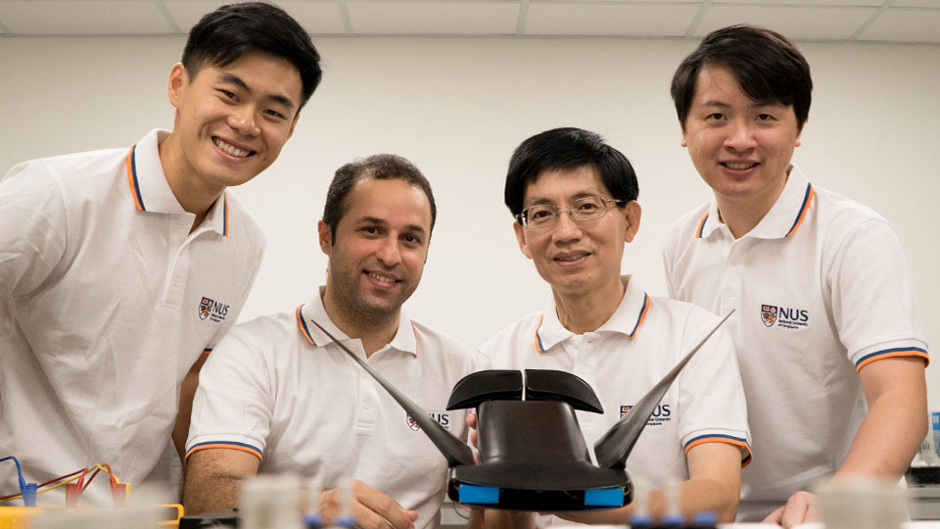Aquatic robot emulates swimming locomotion of manta rays
An aquatic robot that emulates the swimming locomotion of manta rays could be put to use as an underwater surveillance platform.

Developed by researchers at the National University of Singapore (NUS), the so-called MantaDroid, measures 35cm in length, 63cm in width and can swim at a speed of 0.7m per second for up to 10 hours.
Manta rays are of interest because they possess a unique propulsion mechanism that enables them to cruise through turbulent seas by flapping their pectoral fins. This distinctive feature has led researchers to investigate the science behind manta ray locomotion and incorporate similar mechanisms into autonomous underwater vehicles (AUVs).
MantaDroid, which weighs 0.7kg, was designed and optimised over two years after an in-depth study of fluid dynamics and multiple experiments which included testing of 40 different fin designs. The fins that were eventually installed on the robot are a pair of flexible pectoral fins made using PVC sheets, giving the device favourable manoeuvrability and swimming capabilities in pool tests.
The MantaDroid was developed by a team led by Associate Professor Chew Chee Meng and Associate Professor Yeo Khoon Seng from the Department of Mechanical Engineering at NUS Faculty of Engineering.
Register now to continue reading
Thanks for visiting The Engineer. You’ve now reached your monthly limit of news stories. Register for free to unlock unlimited access to all of our news coverage, as well as premium content including opinion, in-depth features and special reports.
Benefits of registering
-
In-depth insights and coverage of key emerging trends
-
Unrestricted access to special reports throughout the year
-
Daily technology news delivered straight to your inbox










Water Sector Talent Exodus Could Cripple The Sector
Well let´s do a little experiment. My last (10.4.25) half-yearly water/waste water bill from Severn Trent was £98.29. How much does not-for-profit Dŵr...